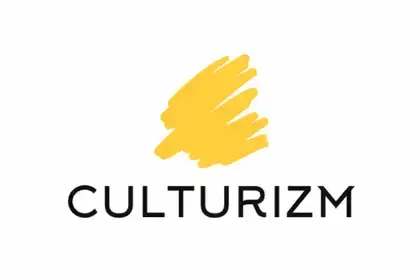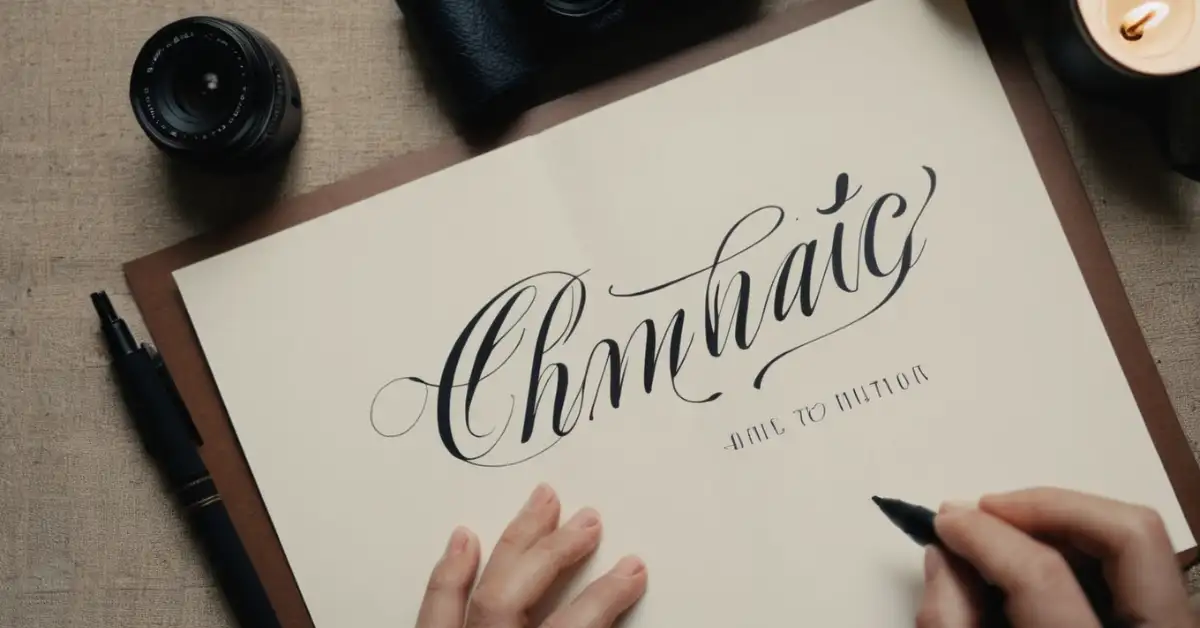Dive into the expressive world of modern calligraphy, a creative twist on the traditional art form that allows for personal artistic expression. This versatile skill enhances everything from event invitations to bespoke gifts with elegance and individuality. Embrace the freedom to develop a unique style, from whimsical to minimalist, as you learn the basics and experiment with various tools.
What Defines Modern Calligraphy?

We’ve all seen the sweeping, elegant scripts that grace wedding invitations and branding materials—this is the art of modern calligraphy. Unlike traditional calligraphy, which adheres to strict historical standards, modern calligraphy offers a fresh, more flexible approach to writing beauty.
Characteristics of Modern Calligraphy
| Aspect | Description |
|---|---|
| Freedom | Allows for personal style and deviations from classic forms. |
| Tools | Uses a variety of instruments, not limited to dip pens. |
| Techniques | Emphasizes fluid, expressive lines and varied letter sizes. |
| Learning | More accessible to beginners, with less stringent rules. |
Rule Bending: In modern calligraphy, the rules are seen more as guidelines. We use our intuition to explore letter forms, creating art that feels current and unique.
Variety of Tools: It’s not just about the traditional nib and ink—although they remain popular, we often see calligraphers adopting brushes, markers, and digital tools to express their creativity.
Expressive Techniques: We encourage exploration in modern calligraphy, incorporating bolder, unconventional strokes and contrasting thin lines with thick swashes for visual impact.
Ease of Learning: We love modern calligraphy’s accessibility. It’s an open door for those of us who want to start a journey in the art of lettering without the steep learning curve of traditional styles.
Getting Started with Calligraphy
Embarking on the journey of learning modern calligraphy can be thrilling. As we dive in, we’ll grasp the basics, select the right tools, set up our workspace, hone essential techniques, and discover helpful resources to guide our practice.
Understanding the Basics
The art of calligraphy is built upon a foundation of basic strokes. These strokes—comprising upstrokes and downstrokes—are the building blocks of letterforms. Understanding how pressure affects the stroke is crucial; light pressure creates thin upstrokes, while heavier pressure leads to thick downstrokes.
Choosing Your Tools
For beginners, the choice of calligraphy tools is pivotal. You’ll need a pen that is comfortable to hold—a straight or oblique holder fitted with various nibs to produce different lines. Inks come in a plethora of shades, and the paper should be smooth enough to not catch the nib but with enough grip to maintain control. For instance, you might find some valuable tips on this in the comprehensive breakdown from The Postman’s Knock.
Setting Up Your Workspace
Prep is key. Ensure that your workspace is well-lit and conducive to work—free from clutter with all your tools within reach. Lay out your paper, pen, and ink, and keep a clean cloth handy for any spills or to clean your nibs between uses.

Learning Basic Techniques
Familiarize yourself with the ‘rules’ of calligraphy such as the correct angle of the nib to the paper and how to join strokes to form letters. Styles of modern calligraphy can vary, so explore different forms to find one that resonates with your aesthetic.
Practice Drills
Practice is non-negotiable. Use practice sheets to drill in the basic strokes, form letters, and perfect your style. Repetition will train your muscle memory. Downloadable sheets from resources like Lettering Daily can be particularly useful for structured drills.
Mastering the Pen
Mastering the pen in modern calligraphy involves understanding the tools—nibs, ink, and pens—and how they interact with paper and pressure. Our journey starts with the basics of gripping and moving the pen to create beautiful strokes.
Working with Dip Pens
Dip pens, including the straight pen and oblique pen, offer a traditional feel in calligraphy. To begin, choose a nib—like the versatile Nikko G nib for its moderate flexibility or the Brause EF66 nib for finer lines. The key with dip pens is the angle at which you hold the pen and the evenness of ink flow. Make sure to dip the nib to cover the vent hole but not too deep to avoid blotches.
- Nib Insertion: Secure the nib into the pen holder until it is snug and does not wobble.
- Ink Dipping: Dip just below the vent hole, wipe the excess, and test on scrap paper.
Exploring Brush Pens
Brush pens come in various sizes and flexibilities, suitable for different lettering styles. Tombow Fudenosuke brush pens are ideal for beginners due to their fine tips and controlled flexibility. In contrast, larger brush pens provide a bolder stroke but require a firm hand to manage the added flexibility.
- Pressure Practice: Start with light pressure for thin upstrokes; increase pressure for thicker downstrokes.
- Flexibility Control: Familiarize yourself with the pen’s responsiveness by doing exercises to vary line width.
Understanding Pen Dynamics
The dance between pressure and stroke is at the heart of calligraphy. A flexible nib bends easily with pressure, creating varied line widths, while a firmer nib provides consistent strokes. We must focus on maintaining a steady hand and an even pressure throughout our writing.
- Steady Strokes: Use your arm to guide the strokes, keeping the wrist and fingers relaxed.
- Consistent Pressure: Aim for a unified look by applying consistent pressure, especially in transitions between curves and straight lines.
Remember, the beauty of modern calligraphy comes from each unique touch we bring to the pen.
Exploring Calligraphic Styles
As we dive into the world of modern calligraphy, we’ll see how it brings a fresh twist to the time-honored craft of lettering.
Traditional vs Modern Calligraphy

Traditional calligraphy incorporates established scripts like Copperplate and Spencerian, which are known for their precision and strict form. In contrast, modern calligraphy encourages creativity and uniqueness, allowing individual flair to shine. This freedom can lead to various interpretations of letters and style, making modern calligraphy very expressive.
Learning Copperplate and Spencerian Scripts
The elegant flow of the Copperplate script is characterized by thick downstrokes and thin upstrokes, mastering which can be challengingly rewarding. Spencerian script, on the other hand, is known for its delicate and graceful appearance. Mastering Copperplate Calligraphy by Eleanor Winters is an excellent resource for those looking to delve deeper into this refined art. Immersing ourselves in the practice and discipline of these traditional scripts provides a strong foundation for any aspiring calligrapher.
Experimenting with Faux and Bounce Lettering
Moving beyond traditional techniques, faux calligraphy offers a way to mimic calligraphic strokes using normal pens—perfect for beginners without specialized tools. Bounce lettering introduces a playful variance in the baseline, adding a dynamic rhythm to our creations. These styles can be a gateway to personalizing our calligraphy and making each piece one-of-a-kind.
Faux Lettering:

Bounce Lettering:

Developing Your Unique Style
Finding our unique voice in calligraphy hinges on experimentation and the integration of different styles. Modern calligraphers often blend traditional techniques with innovative approaches, resulting in a signature style that represents their artistic identity. There’s no right or wrong here—encouraging us to embrace the beauty of individual expression in our lettering.
Practical Applications
Modern calligraphy isn’t just art; it’s a way of adding personality and flair to various aspects of our lives.
Creating Beautiful Projects
Calligraphy transforms ordinary items into works of art. Whether we’re hand-lettering invitations or enhancing wall decor, the right calligraphy supplies play an essential role. For example, using a brush pen allows us to create dynamic strokes effortlessly, perfect for personalized greetings or artistic compositions.
- Event Stationery: Invitations, place cards, and thank you notes.
- Home Decor: Framed quotes and embellished household items.
Social Media and Sharing Your Work
Social platforms like Facebook and Instagram have become showcases for modern calligraphers. Here, joy and inspiration are shared through snapshots of our latest pieces, and constructive feedback fuels improvement.
- Post progress shots or final pieces to engage with followers.
- Use hashtags to discover new trends and connect with the community.
Joining Workshops and Communities
Getting involved in a calligraphy workshop is a fantastic way for us to sharpen our skills and meet others. Organizations like The Postman’s Knock offer comprehensive guides and project ideas that apply to real-life uses of calligraphy, ensuring that we continue to grow and find joy in our practice.
- In-Person Workshops: Physical meetups for hands-on learning.
- Online Communities: Forums and Facebook groups for skill exchange and support.
Advancing Your Skills
As we delve deeper into the world of modern calligraphy, it’s crucial to focus on honing advanced techniques, embracing digital tools, and committing to consistent practice. Together, these elements form the cornerstone of proficiently advancing our skills in this artful discipline.
Mastering Advanced Techniques
To move beyond the basics, we need to immerse ourselves in mastering copperplate calligraphy. Copperplate script, known for its elegant form and precision, demands our attention and dedication.
Regular Exercises:
- Practice advanced flourishes and intricate letterforms.
- Experiment with different nibs and inks to understand their impact on your work.
Incorporating Digital Tools
The integration of technology into our calligraphy practice can be a game-changer. Digital tools, especially popular tablets like the iPad, offer valuable flexibility with apps like Procreate. With an array of Procreate brushes designed to mimic the strokes of traditional calligraphy pens, we can expand our repertoire and adapt our skills for the digital realm.
Digital Advantages:
- Practice anytime, anywhere with a tablet.
- Undo mistakes instantly, which accelerates the learning process.
Improving Through Consistent Practice
The path to proficiency is paved with repetition and practice. Setting aside time every day to practice is not just about discipline—it’s a ritual that becomes the foundation of our skillset. By constantly repeating letterforms and strokes, we etch them into our muscle memory.
Practice Attributes:
- Consistency: Daily repetition is key to improvement.
- Patience: Trust the process, even when progress seems slow.
Resources and Supplies
When we dive into the world of modern calligraphy, we quickly find that the right supplies make all the difference. From the smooth glide of a well-crafted nib to the rich flow of premium ink, each component in our toolkit plays a crucial role in our calligraphic journey.
Shopping for Calligraphy Supplies
To shop for calligraphy supplies, start with a basic understanding of what you need. Nibs are essential; look for ones labeled as ‘calligraphy nibs.’ There are various types available, and each offers a different line quality and ink flow.
- Nibs: Hunt Imperial, Brause Rose, Nikko G
- Pen Holders: Straight, Oblique
- Ink: Bottled, Cartridges
Selecting Quality Paper and Inks
Paper for calligraphy should be smooth and non-fibrous to prevent ink from bleeding. Opt for cotton or mixed cotton papers, which are durable and have a nice texture. As for inks, sumi ink and walnut inks are popular for their density and flow, but there’s a wide range to choose from, depending on the desired effect.
- Paper: Cotton, Mixed Cotton, Marker Paper
- Inks: Sumi Ink, Walnut Ink, Gouache
Creating a Tool Kit
A complete tool kit is our best ally. It should include various nibs, a pen holder or two, high-quality ink, a non-fibrous cloth for clean-up, and a potato to clean your nibs. Here’s how you might organize it:
| Essentials | Optional |
|---|---|
| Nibs | Light Pad |
| Pen Holder | Ink Mixer |
| Ink | Ruler / Guides |
| Cleaning Cloth | Practice Sheets |
Maintenance Tips for Tools
To extend the life of our calligraphy tools, proper maintenance is key. Clean nibs after each use with warm water and dry them with a cloth. You can also insert your nibs into a potato overnight to remove stubborn ink. Store pens vertically with the nibs up to avoid ink clogging.
- Cleaning: Warm water rinse, dry cloth, potato for nibs
- Storage: Vertical, nibs up, cool and dry place
By paying attention to the quality and maintenance of our tools and supplies, we ensure a smoother, more enjoyable experience as we create beautiful modern calligraphy.
Our Tips for How You Succeed with Modern Calligraphy
Modern calligraphy is an art form that’s both expressive and enjoyable. It breaks away from traditional rules, allowing for more artistic freedom

The Right Tools:
Starting with the right tools can make a huge difference. We recommend using brush pens for beginners due to their ease of use. They offer a great way to practice thick and thin strokes essential in calligraphy. Some of our top choices include the Tombow Dual Tip brush pen and the Pentel fude touch sign pen.
Understanding Strokes:
Remember, in calligraphy, upstrokes are thin, while downstrokes are thick. Mastering this will help you create that signature calligraphy contrast.
Hold The Pen Correctly:
Your grip on the pen affects your writing. Hold it at a consistent angle – not too upright – to achieve the thick and thin lines without damaging your pen’s tip.
Practice Sheets:
Utilize practice sheets to get comfortable with letterforms. They help in building muscle memory, vital for fluid and consistent writing.
Keep a Pencil Handy:
Never underestimate a good pencil. Use it for sketching out concepts and creating guidelines. A simple HB pencil will do.
Quality Paper Matters:
Good quality paper gives you a smooth writing experience and prevents ink bleeding. Consider trying out Canson Marker Paper or an HP Premium choice.
Faux Calligraphy Practice:
With just regular markers or ballpoint pens, you can practice faux calligraphy by drawing in the thicker downstrokes after writing your letters.
By following these tips and regularly practicing, you’ll be well on your way to mastering modern calligraphy. Remember, patience and persistence are key, so keep practicing!
FAQ – Modern Calligraphy
What is modern calligraphy method?
Modern calligraphy is a free-form style of writing that maintains the principles of traditional calligraphy while allowing for more expressive and individualistic flourishes and variations.
What is the difference between calligraphy and modern calligraphy?
Traditional calligraphy follows strict rules regarding stroke order and letter forms, while modern calligraphy allows for more personal expression and may break some of these rules to create a unique, contemporary style.
What are the 4 types of calligraphy?
The four common types of calligraphy include traditional calligraphy, modern calligraphy, brush pen calligraphy, and faux calligraphy. Each has distinct tools and techniques.
What is the most popular style of calligraphy?
The most popular style of calligraphy can vary based on cultural context and current trends, but modern calligraphy is very popular due to its flexibility and the personal touch it allows the artist to incorporate into their work.
If you enjoyed our blog post on “Modern Calligraphy,” please feel free to share your thoughts with us in the comment section below. We’d love to hear about your experiences!
If you want to keep reading more from us, have a look at these articles.





